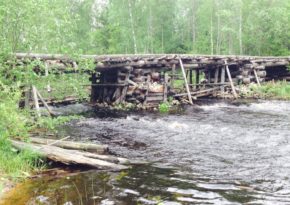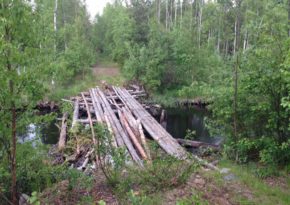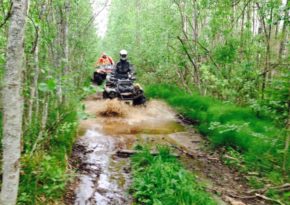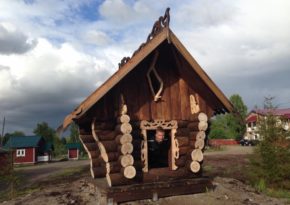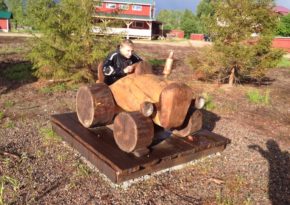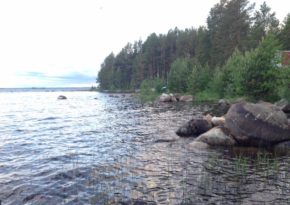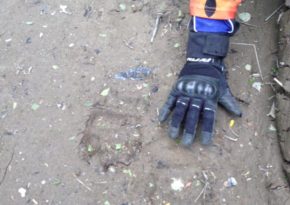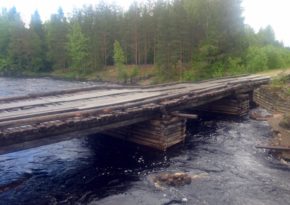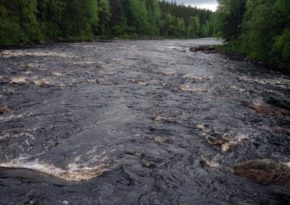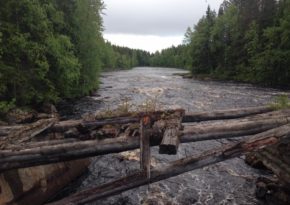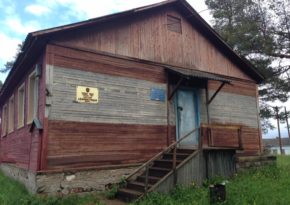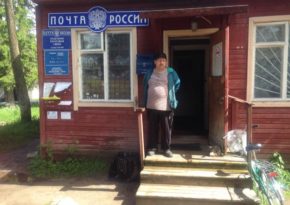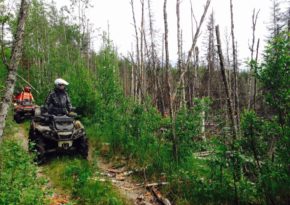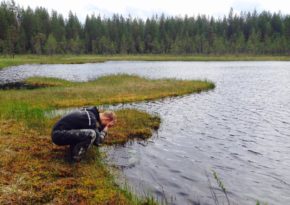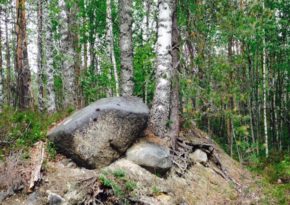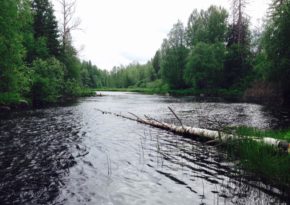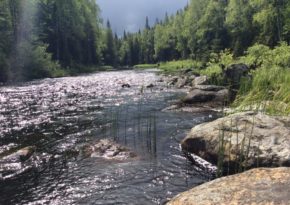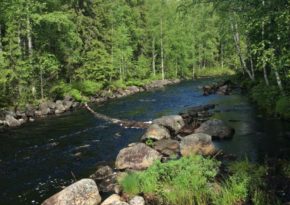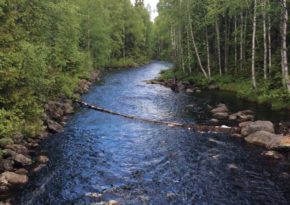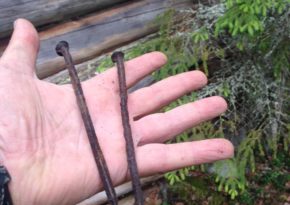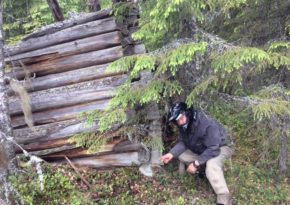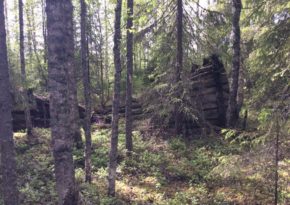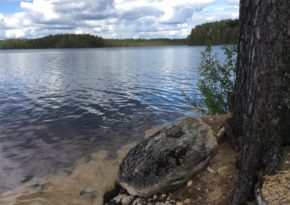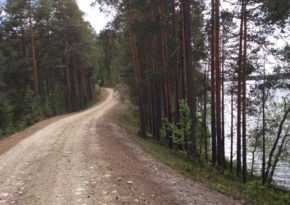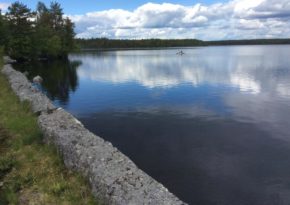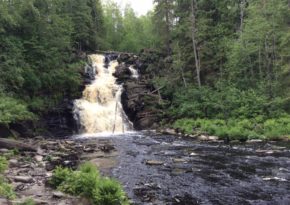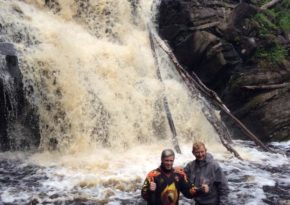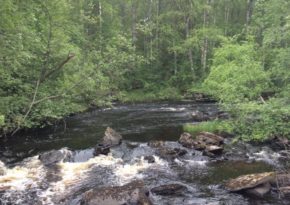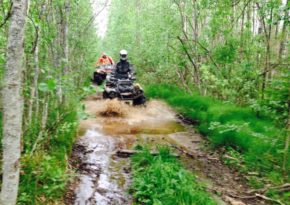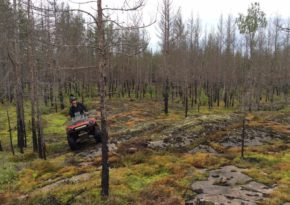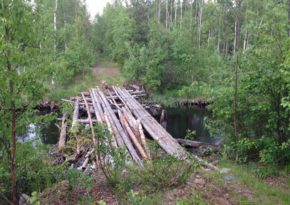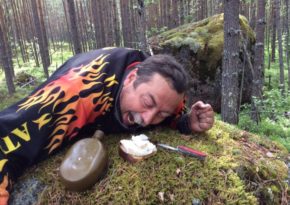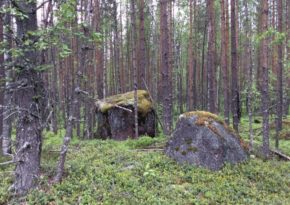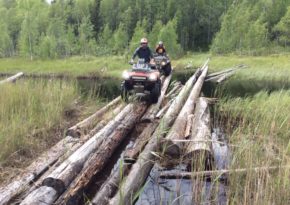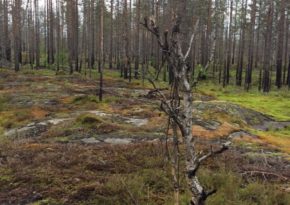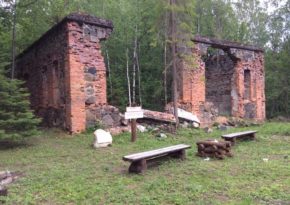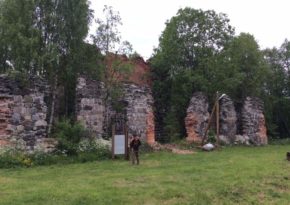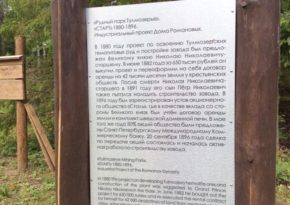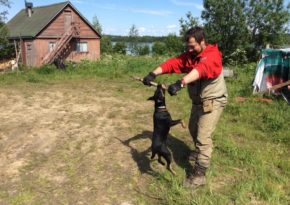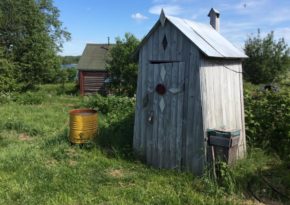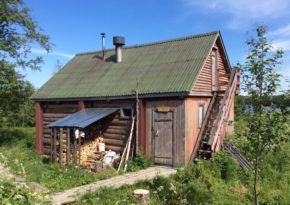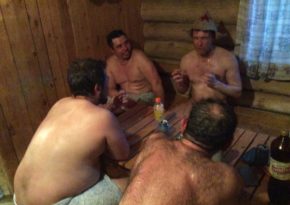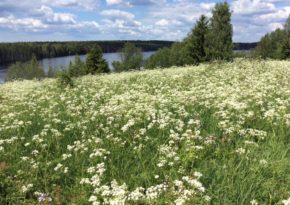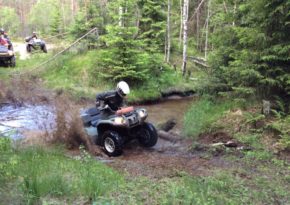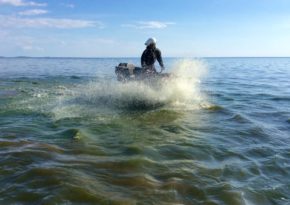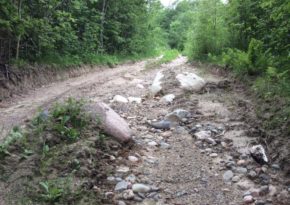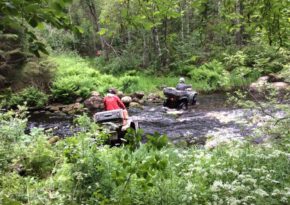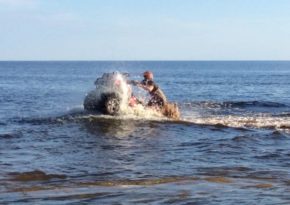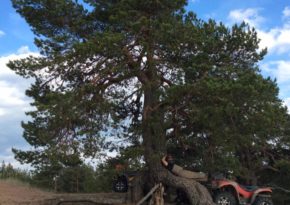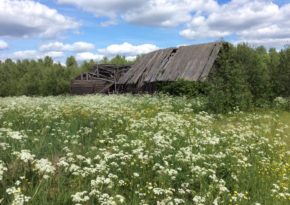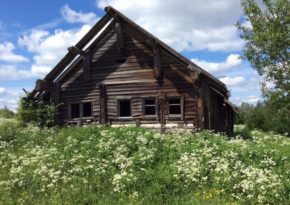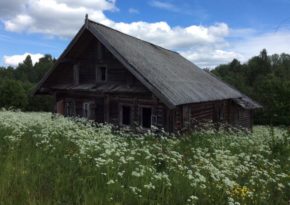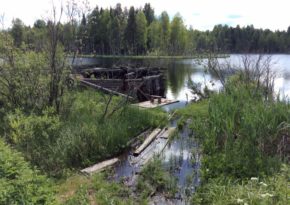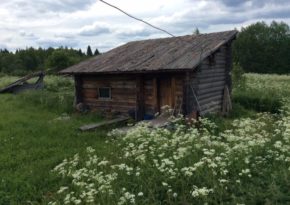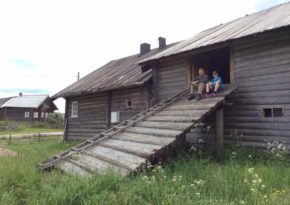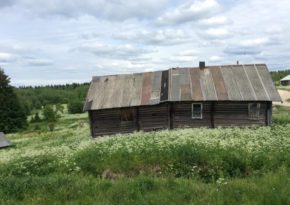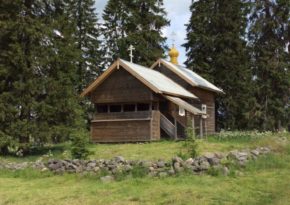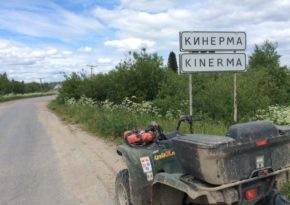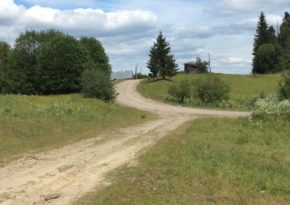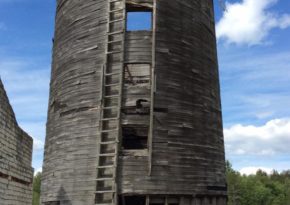Karelia 2015
"I'm flying further fast along the rails iron-cast…"
The last highrise buildings of the capital were left behind. And the Moscow – Petrozavodsk express train, slowly picking up speed, crawled out of the Leningrad railway station tunnel like a huge anaconda and quietly rustled to the north. Inside its green belly, closer to the tail, the four fans of travelling took their seats in a nice compartment. Our seven-day expedition across Karelia by ATVs starts tomorrow! Another adventure has begun!
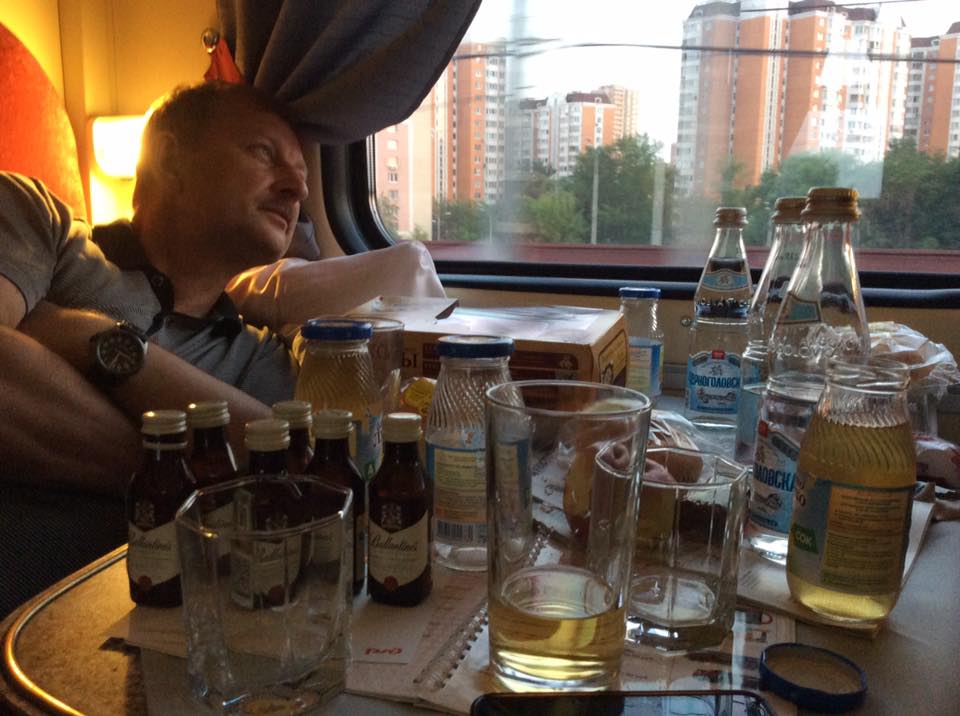
The capital of Karelia, Petrozavodsk, greeted us with gloomy, cool weather and a steam locomotive with a red star, standing on the secondary railway.

And a couple of hours later, our team consisting of six ATVs and seven members of the expedition headed west, to the village named Kudoma, where our first overnight stay will take place. Several kilometers of asphalt highway quickly ended and we turned onto a picturesque forest road.
Soon a nice ground path led us to a swamp with deep ruts filled with viscous slurry, where the first breakdown of the equipment occurred. One of our mates managed to "take off" two wheels of his very expensive ATV, shod in very expensive rubber upon the tuned discs with "badlocks".
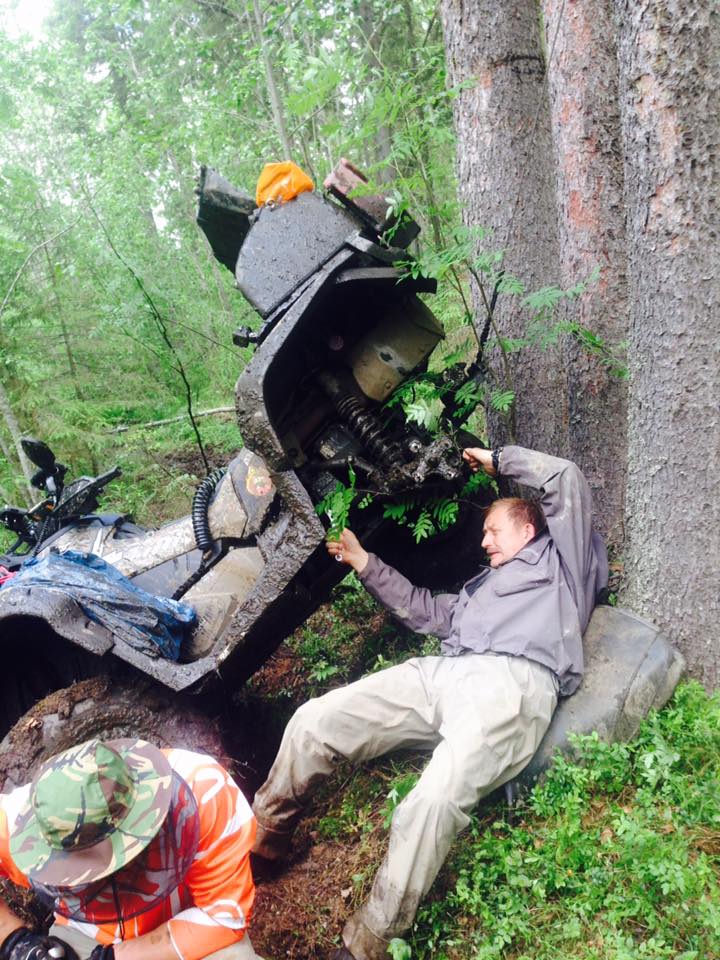
It seems that these devices were designed specifically to ensure that the tires could no way be disassembled! ![]() That provoked a slight delay and as soon as the problem was fixed, we continued to get acquainted with the nature of the Karelian region. And it became more and more amazing and diverse with every kilometer!
That provoked a slight delay and as soon as the problem was fixed, we continued to get acquainted with the nature of the Karelian region. And it became more and more amazing and diverse with every kilometer!
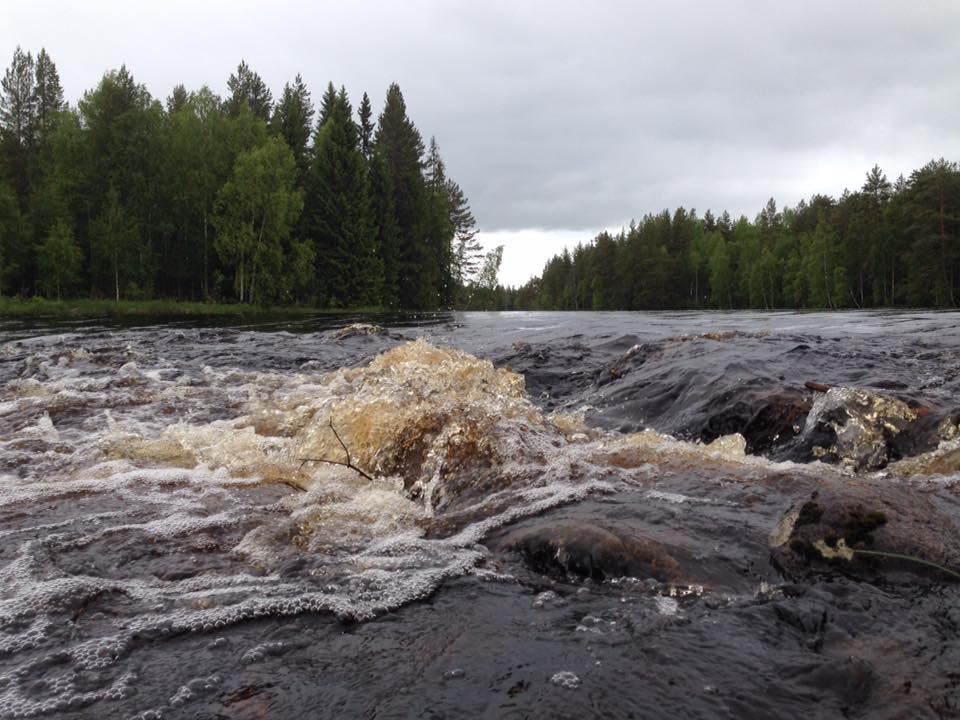
A dense mixed forest with edges white because of the lilies in blossom and the purest air, full of indescribable smells of various grasses, once changed into the gorgeous views of lakes and rivers. We were wading through shallow rivers and crossing the deep ones over the wooden dilapidated bridges. The water in them was dark brown, like the skin of a brown bear, the traces of which we had repeatedly encountered on our way.
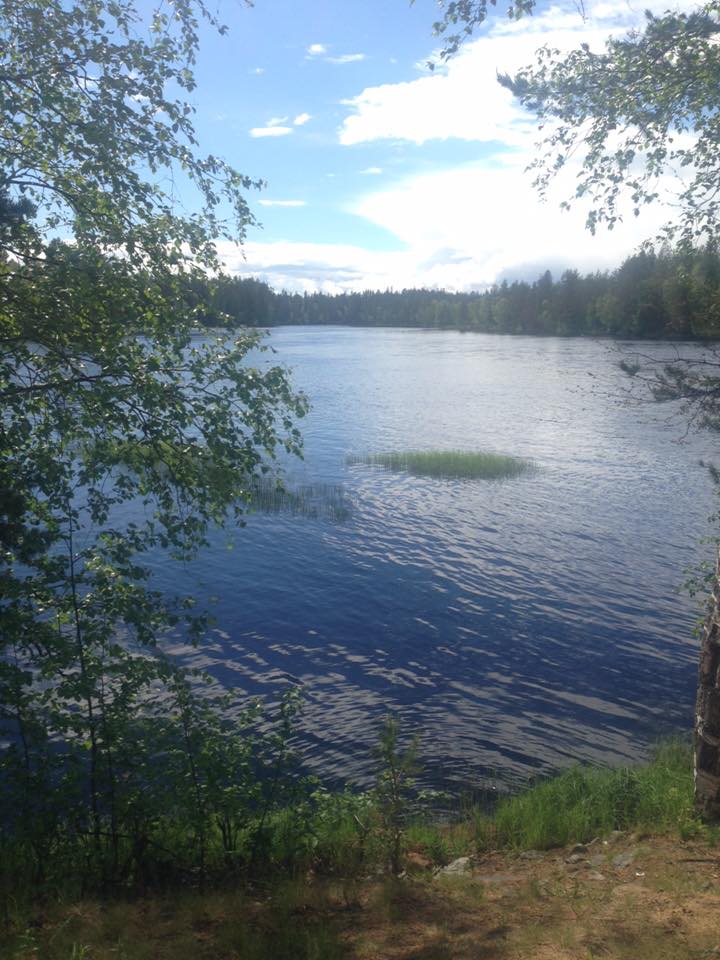
There were a lot of mushrooms. They grew right on the road, in the grass between the ruts and on the roadside. It seemed that they had run out of the forest to meet us and, seeing our group, they froze in amazement. We made a stop, carefully cut off the good big mushrooms and took them with us for some reason, but soon we realized that there were so many of them that it would be unreal to pick them all up. At 6 p.m. we arrived at the place of the overnight stay, the Kudoma village, which was situated on the shore of a huge lake with a funny name Syamozero. A chic Russian sauna with brooms and bathing in cold water completed this wonderful day.
At 10 a.m. we left Kudoma and a sandy road led us along the lake towards the Finnish border. On one of the dozens of islands in Syamozer, a wonderful movie "The cold Summer of 1953" was filmed. The landscape became even more bright and interesting. The tall pine trees grew right on the rocks, twining them with their roots. Huge boulders covered with juicy green moss lay along the road. Fast rivers with rifts (which is a paradise for kayakers) and log bridges over then made a complete picture of the real Karelia!
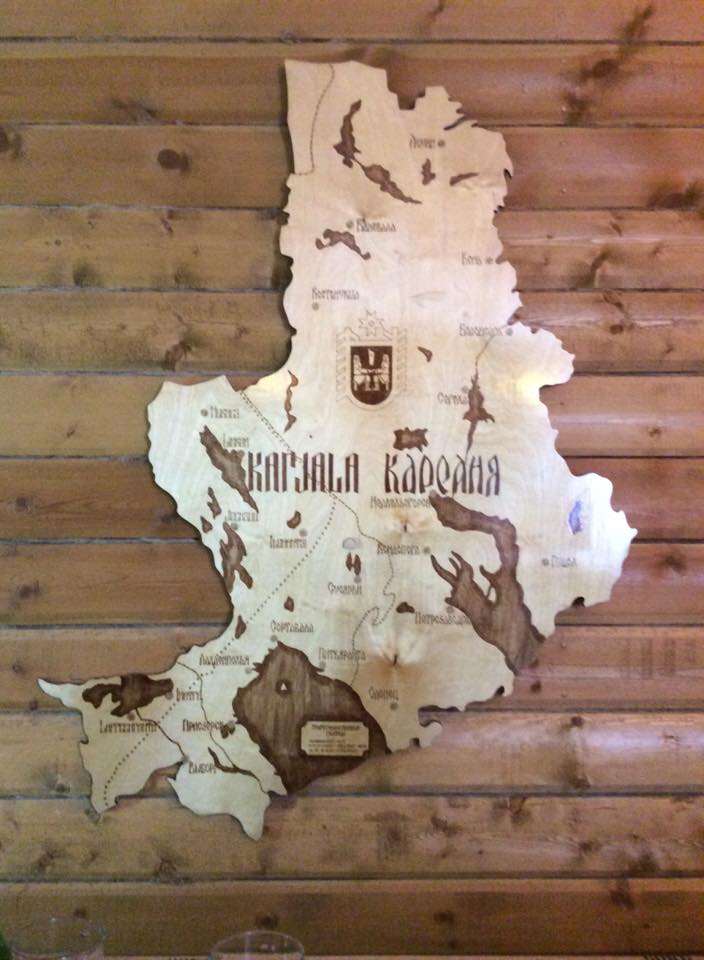
We drove about 100 kilometers, but we hadn't met a single living soul so far, not counting hares intending to jump right under the wheels of our ATVs.
Finally, we followed the paved road, which was presented by quite a smooth rolled-up grader. There we started coming across the villages with common Finnish hard-to-pronounce names like Tunkhunvaara or Leppaniemi. In the centre of one of the big villages, Suoeki, we made a stop next to a one-story wooden building with two entrances. While a crowd of local boys were stuck to our quads, we went up the wooden stairs to the entrance with signs "Russian Post" and "Shop".
The simple assortment of the modest shop completely satisfied our needs for cigarettes and beer with a roach. At the opposite entrance there were two signs "Administration" and "Obstetric department". Apparently, the local mayor works part-time as a gynecologist. However, judging by the big barn lock on the door, he has a day off today. The reception of the population takes place on Mondays and the childbirth is on Wednesdays. Thursday is a sanitary day. Everything is clear.
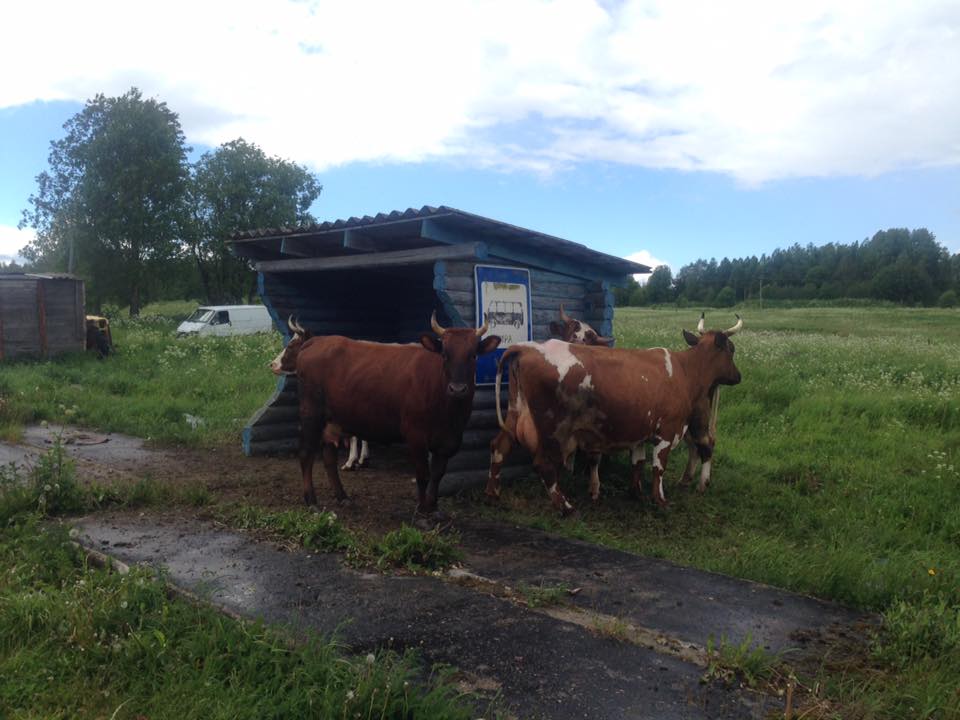
When there were about 20 kilometers left to the place of the overnight stay, week experienced another breakdown of the equipment: the radiator on our guide's ATV leaked heavily. I had to tow him the rest of the way. A private cozy hotel "Vegarus" in the village of the same name, situated on the shore of Lake Salonjarvi, provided us with a wonderful sauna, beer and a pike perch prepared specially for us. It became the perfect end to the second day of the expedition.
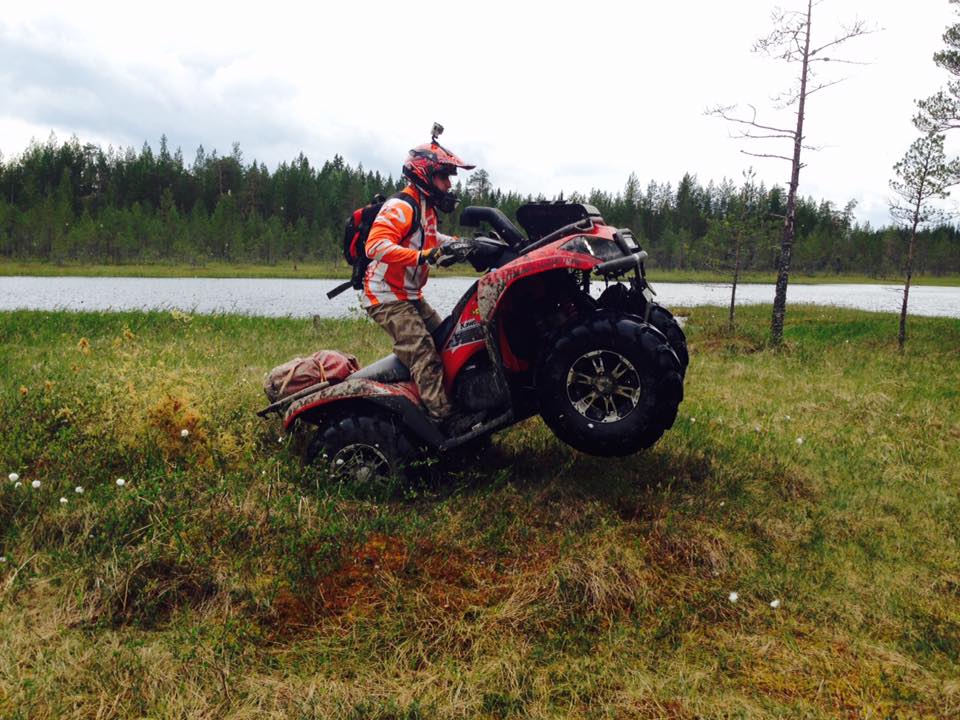
Communication link in Karelia leaves a lot to be desired. If the Megaphone operator still somehow worked in big villages, then the MTS link completely disappeared on the second day. There are no problems with the Internet. I mean, no Internet = no problem.
And what about the weather? It is unreal to predict what day it will be today. The sun may shine brightly in the morning, but in an hour the sky will be overcast with the stormy clouds, the temperature will drop sharply and gallons of water will pour on the ground. In another half an hour, the wind will blow away the clouds and again there will appear the sun, warmth, birds singing… And this way it will be repeated several times a day.
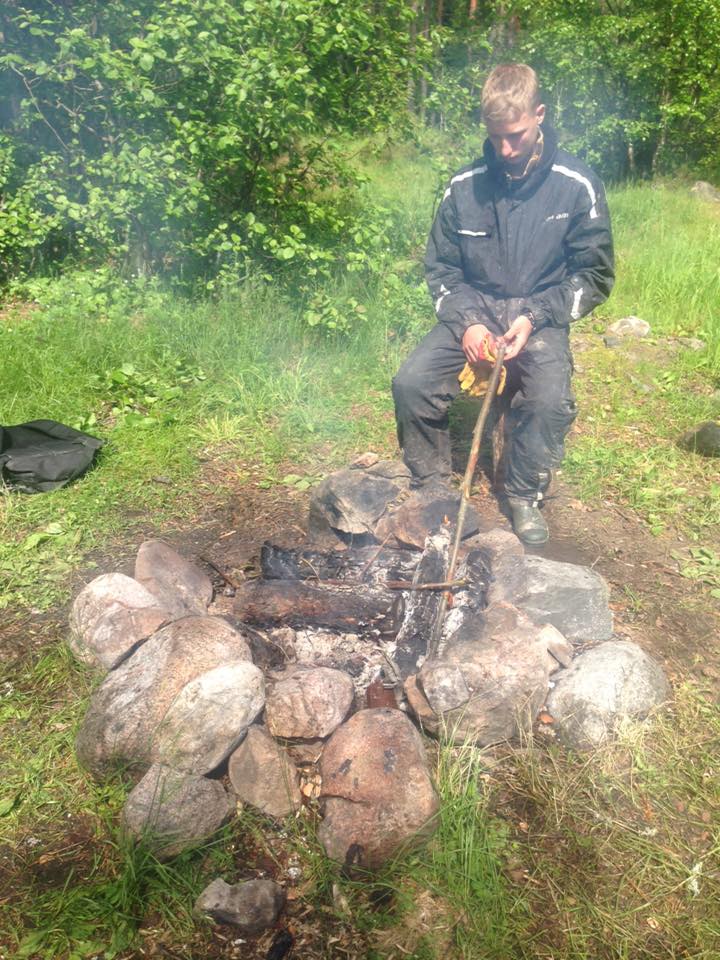
The third day of our expedition began with a discussion of the upcoming route. Judging by the map, there was an interesting option to go between two lakes, but the area was swampy. The guide said that he did not know if there was an opportunity to break through there, since he himself had not explored those places. We decided to give it a try. At 10 a.m., filling full tanks and extra cans with gasoline, we left the cozy hotel and flew along a gorgeous sandy forest path towards the Finnish border. And again we saw the rushing rivers, tall pines, huge boulders and the unforgettable scent of the purest Karelian forest air. Splendid!
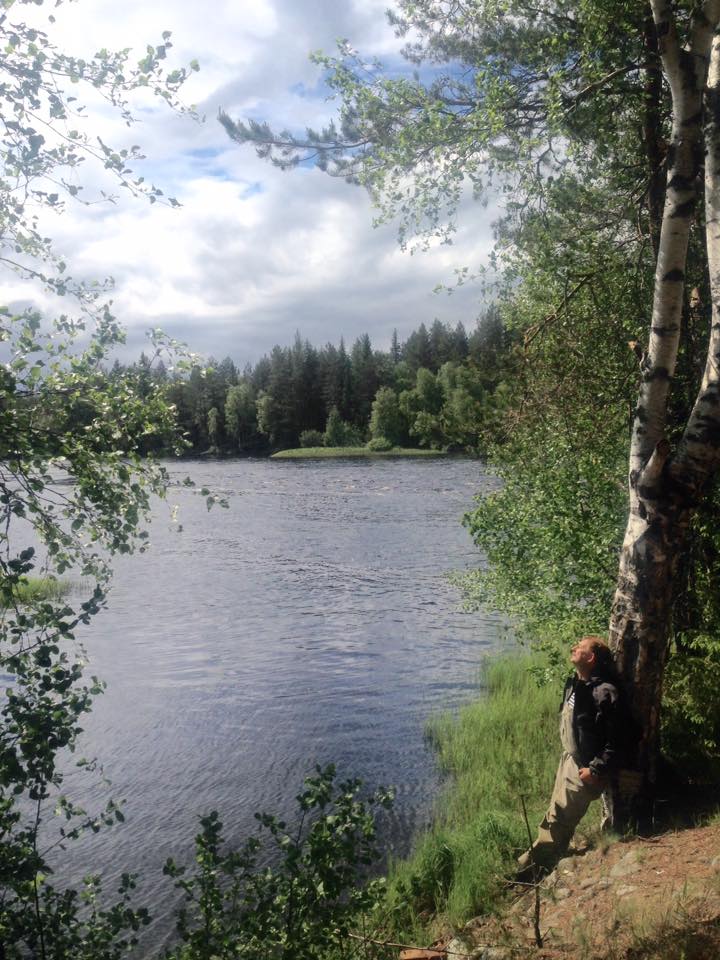
After 40 kilometers the road turned into a path and then completely disappeared. The navigator showed that a few kilometers to the west there was some kind of forest road, but in order to reach it, we had to overcome a difficult section. And this route was laid across rocks, forests and swamps.
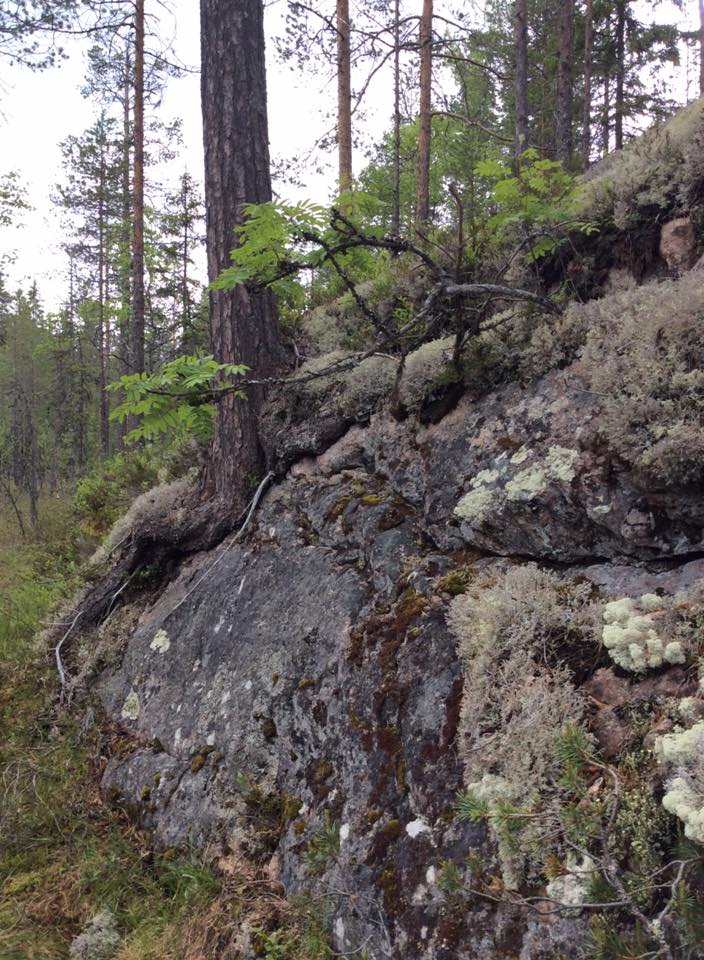
Making our way between the trees, we suddenly stumbled upon the remains of an old log house. It stood on stones, overgrown with trees inside and outside. Apparently that house was more than a hundred years old.
But why was it there? There were no roads near, no river, nothing… We climbed the rocks, walked along the lake and finally ran into a swamp. There was no further way to pass. We tried to find a workaround, but at some point I heard a grinding sound inside my ATV and it held still. That's all. It must be something wrong with the gearbox.🙁 Our attempts to move it from its place by the tow were unsuccessful, as the wheels were blocked. It was necessary to remove the driveshaft. Having dismantled half a quad in the forest, where clouds of mosquitoes tried to bite us alive, we found another problem: the tube burst into two halves. That was the end! It was amazing how the ATV didn't fall apart itself?!
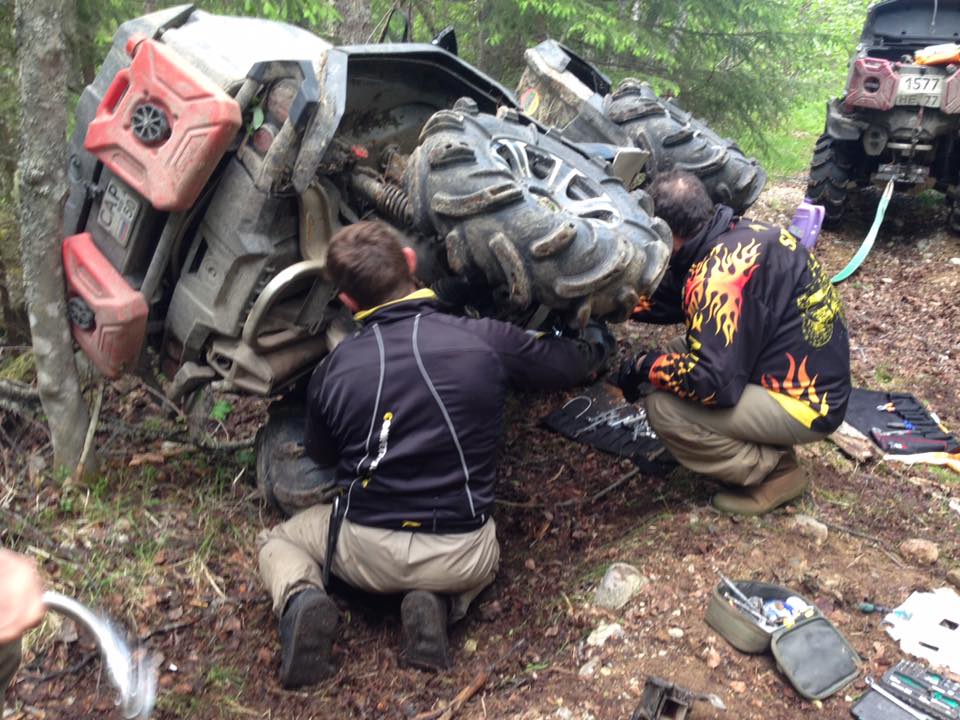
We got some good pieces of advice about the future fate of our four-wheeled real estate from our friends: 1. Pour gasoline, burn it and post a video with the appropriate comment on YouTube; 2. Drown it in the nearest swamp; 3. Advertise it on AUTO.ru website on sale for 1000 roubles for a seller to pick up the location and take it, since the coordinates are attached, etc. Despite the technical issues, I may say that the mission to evacuate the BRP 1000 XMR from the Karelian forests lasted several hours and was completed successfully. At night our team with two ATVs on tow ropes (our guide's Yamaha vehicle overheated and also refused to move on) returned to the place of the morning start.
We must pay tribute to the host company, as they managed to make replacement of two ATVs from Petrozavodsk overnight and we continued our expedition the next morning.
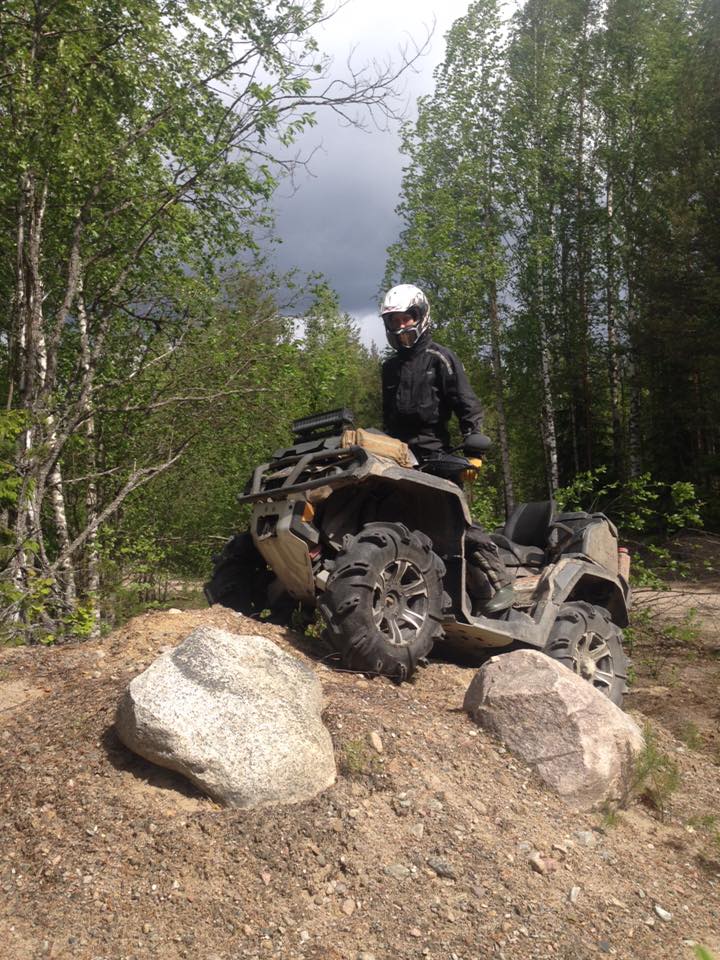
The fourth day of our adventures around Karelia began with rainy cool weather. However, it is the best time to travel by quad bikes..
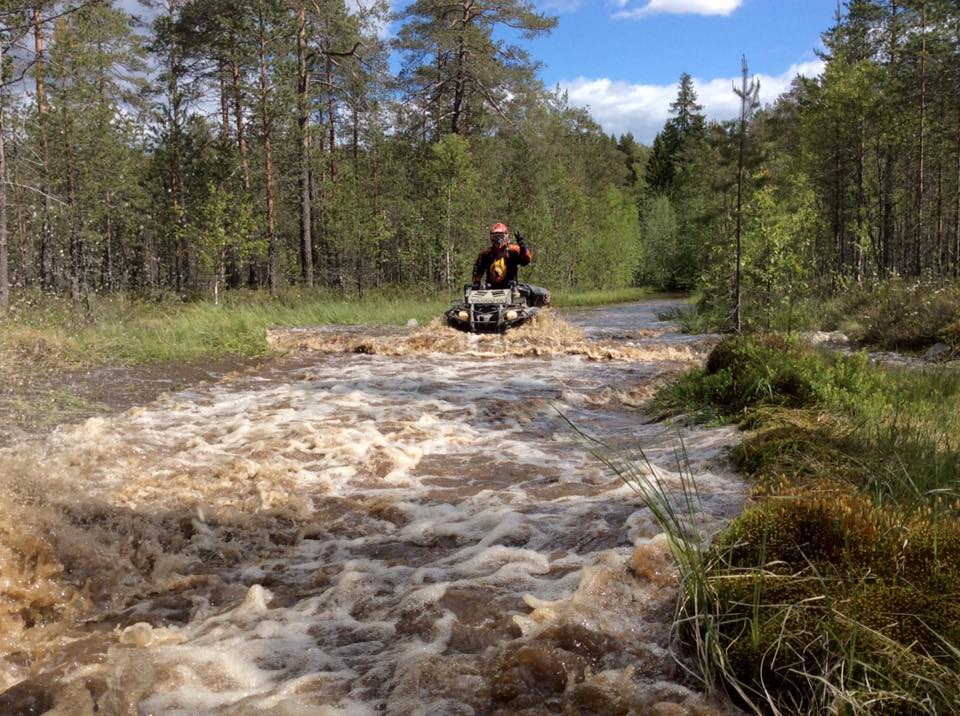
Today we had a very long and interesting route. We raced along the narrow forest paths, splashing puddles and making last year's foliage and pine needles fly. The ship lines were similar to the giant pencils. There were a lot of lakes, in which the sky, forest, rocks were reflected as if in a mirror… What stunning landscapes!!!
While crossing over numerous rivers, I paid attention to the fact that the basis of the bridges was made of stone. The guide said that those bridges and dams had been left by the Finns.
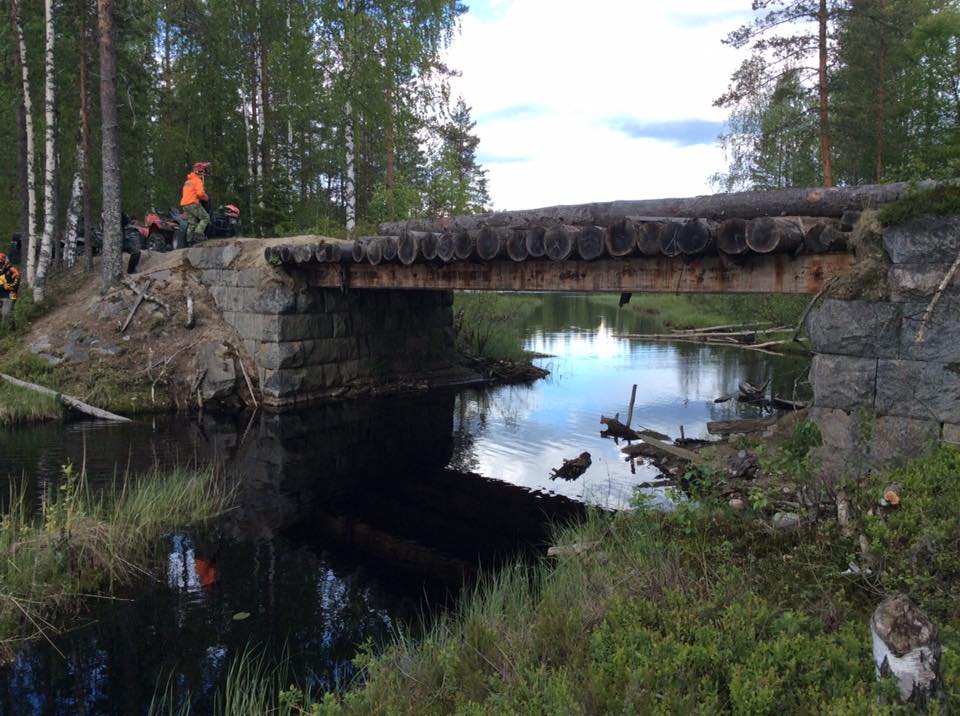
Until 1939 there were many resorts, sanatoriums, excellent roads and developed infrastructure in this area. But after the USSR moved the border to the northwest, everything began to decline here. And some garbage dumps right in the woods and by the roads reminded us that this had been Russian territory for a long time.
We drove up to a place with a beautiful name "White Bridges". There were no bridges, but a gorgeous waterfall, the noise of which can be heard hundreds of meters away. The forest, huge rocks, bubbling water the color of strongly brewed tea was simply a fascinating sight!
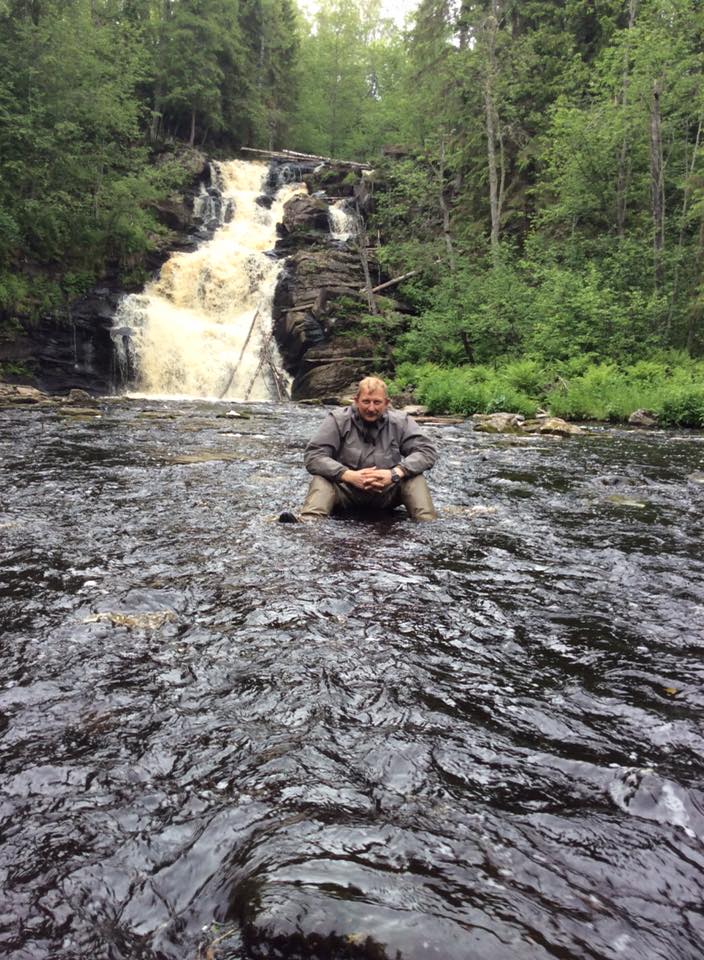
On that day we experienced many things: a "mountain slalom" on the steep, rocky slopes; overcoming the swamps, where we practically dragged our quads in a quagmire; and following a surprisingly beautiful path along a large river with bubbling rapids. A 245 km distance was a pretty decent run by such equipment, given the complexity of the route in addition. We finished our wat late at night in the village named Uuksunlahti, where, as always, the friendly hosts of a small but very cozy hotel were waiting for us with a delicious dinner, a heated sauna and freshly smoked bream and a soft bed.
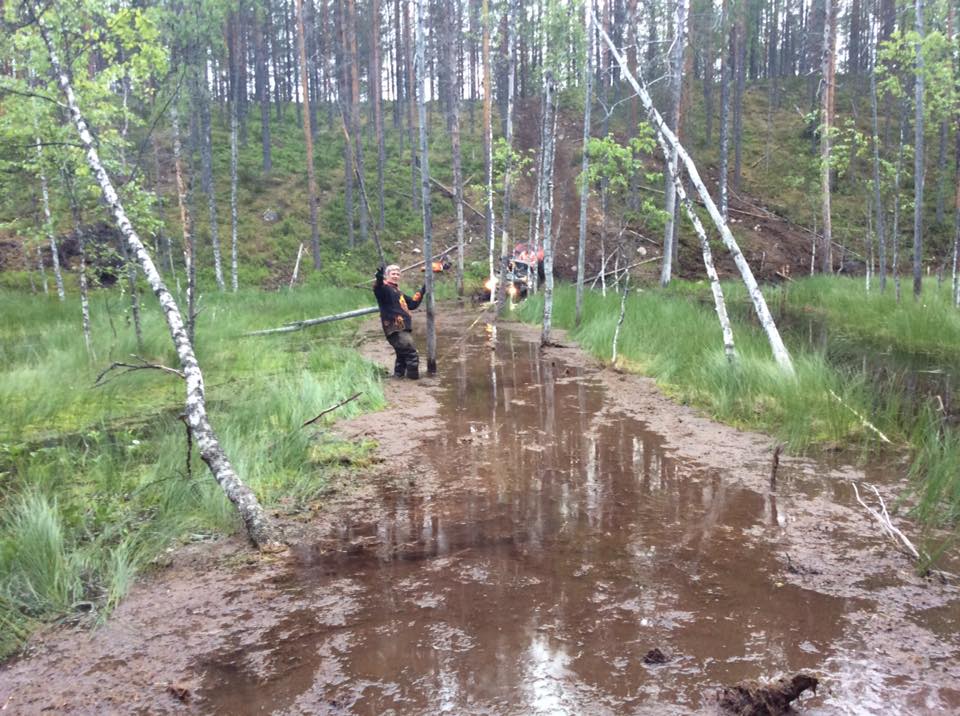
Day 5. Already the usual rainy morning saw us off. A rocky road led us into a dead forest. Huge areas of scorched pine trees with charred tree trunks made a surreal picture together! The giant cube-shaped boulders the size of a minibus were scattered in a chaotic manner, as if the giants were playing dice and forgot to take them off.
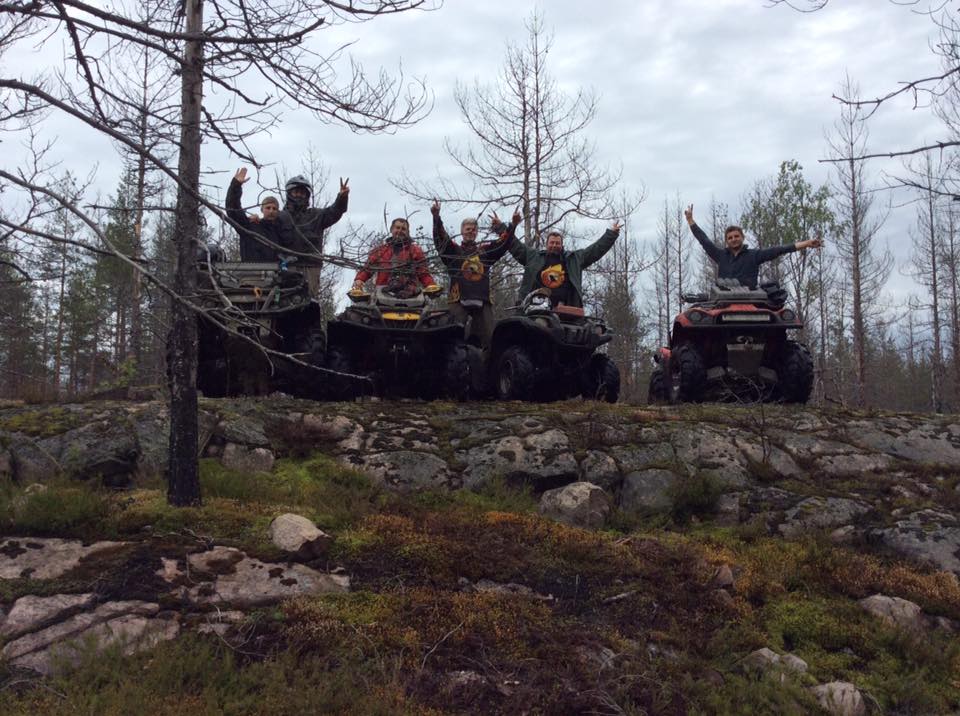
Not far from the St.Petersburg – Murmansk highway, we stumbled upon the ruins of an iron foundry built at the end of the 19th century. From a fairly large enterprise at those times, now only the meter-high walls of red bricks and stones remained.
By 7 p.m., having overcome a 140 km distance, we arrived at the Kohtuselga village located on the bank of the Tulmozer river. The old log huts, blackened by time and covered with slate and roofing material, wooden boats docked near the shore, bridges and waist-high grass made up a typical picture of a Karelian village. We were accommodated in one of the houses and half an hour later we were already whipping each other with fresh birch brooms in a Russian sauna. Another wonderful day ended with a dinner consisting of bear meat chops and stewed grouse with cloudberry tincture!
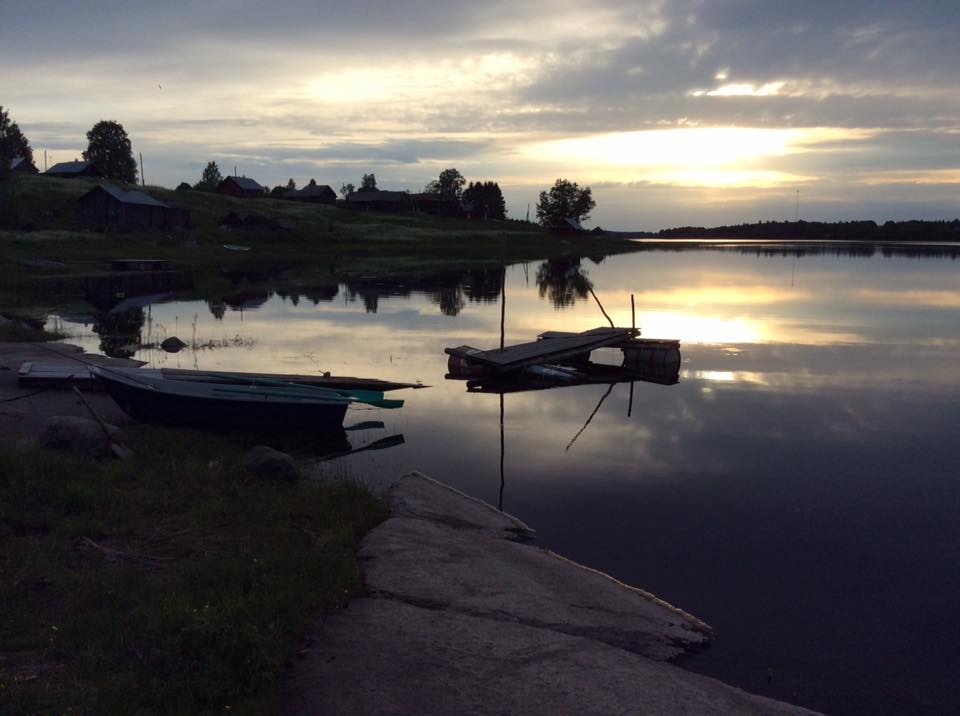
The sixth day of our expedition unexpectedly began with nice weather. The clear sky and the bright sun accompanied us all day up to Lake Ladoga, where we made a stop to have lunch.
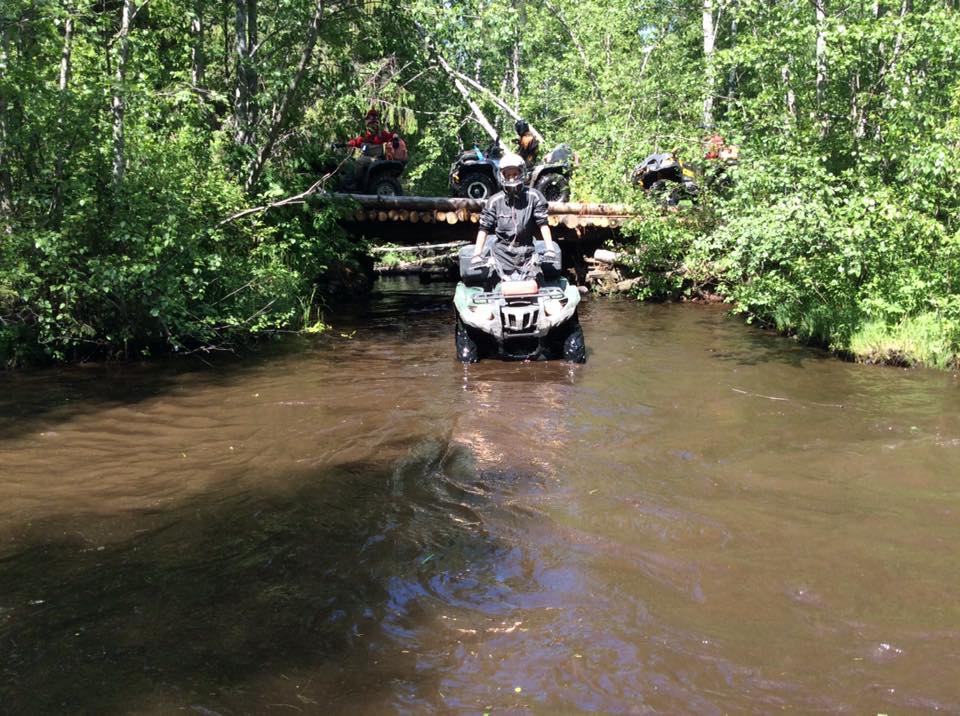
Before that we went through a gorgeous section of a huge swamp, in which we had been struggling for about an hour and got out of it all in mud and grass. So swimming in Ladoga was most welcome. A multi-kilometer sandy beach and a high shore, which resembled the sand dunes, provoked us to "burn the gas" to the fullest!
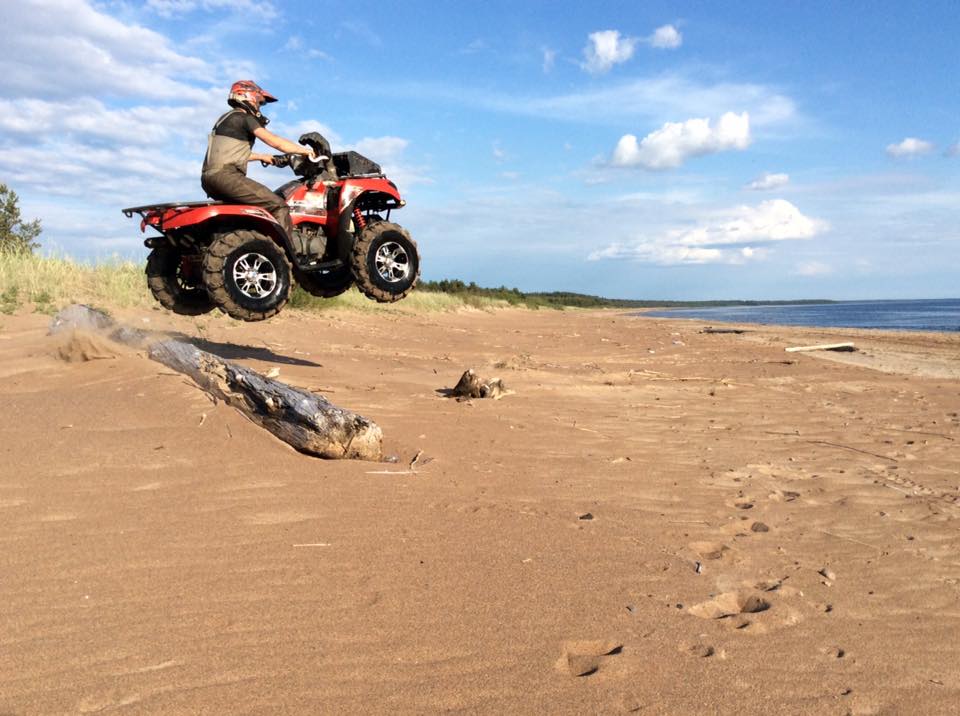
That was exactly what we did while our guide was preparing a simple snack of sandwiches and tea with chocolates, which we had bought at a nearby store in Vidlitsa, which took place on both sides of the river of the same name.
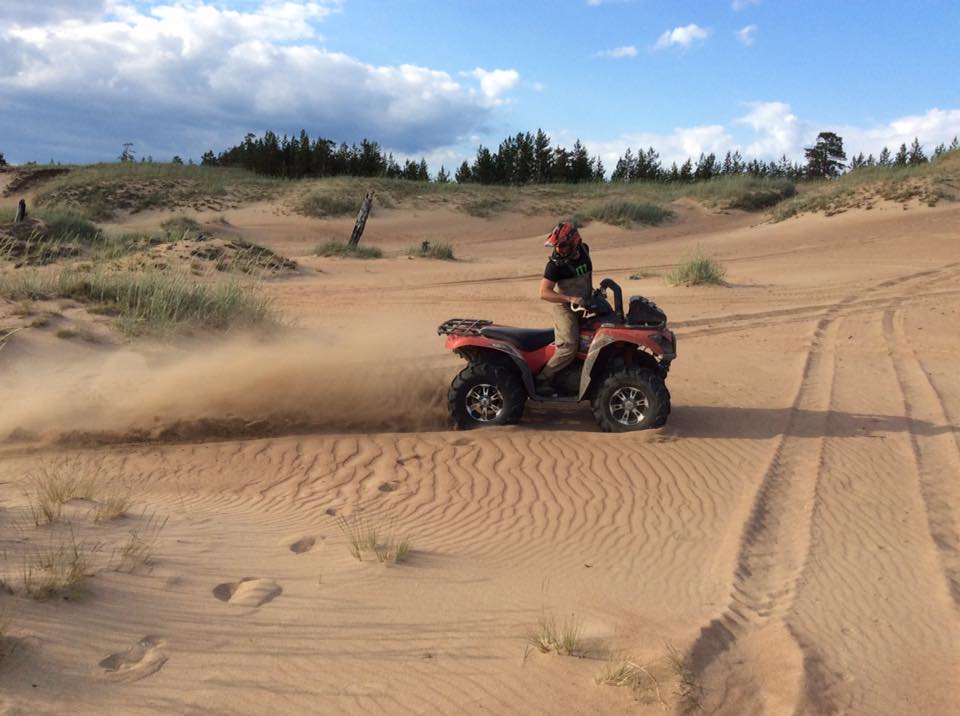
What is the most interesting thing in Karelia? Of course, its nature!
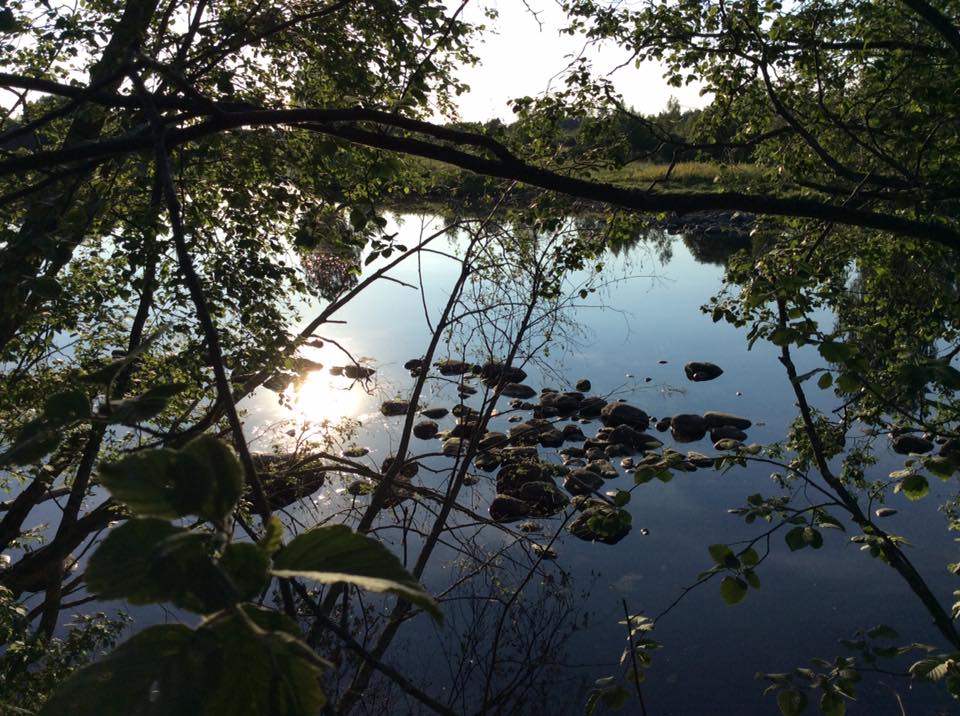
The country of thousands of lakes and rivers amazes with the diversity of the landscape. Virgin forests, rocks, huge stones, picturesque swamps overgrown with velvet moss and flowers… Dozens of abandoned villages with leaning houses blackened by time look like the fabulous huts of the Russian folk characters that went for a walk on the edge of the forest.
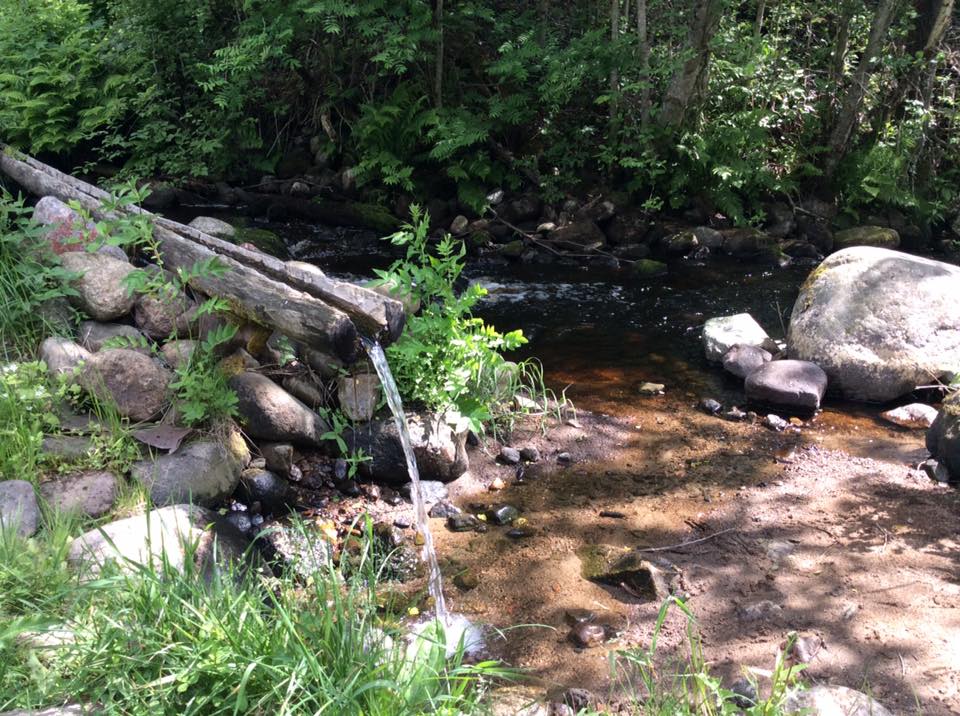
There are few people and almost no cars. Civilization will hardly come to this area soon. Probably, this is a good thing, on the one hand. But on the other hand, people here are leaving their homes and entire villages. We stopped at one of them, which had an interesting name Kinerma. Once a large village with its own church, known since the 17th century, has been well preserved only thanks to the enthusiasm of one family and the help of... some Finnish society of friendship with Karelia.
Houses that are more than two hundred years old are carefully preserved and there is even a small hut-museum with a variety of utensils exhibited. There is also a chic Russian sauna on the banks of the river… But the government, apparently, doesn't have any budget or desire to preserve at least what has remained. That's a pity, because this is the history of our country and our ancestors, without which we, like the Ivans who do not remember their kinship, destroy our past. And together with it we lose our conscience, memory and soul.
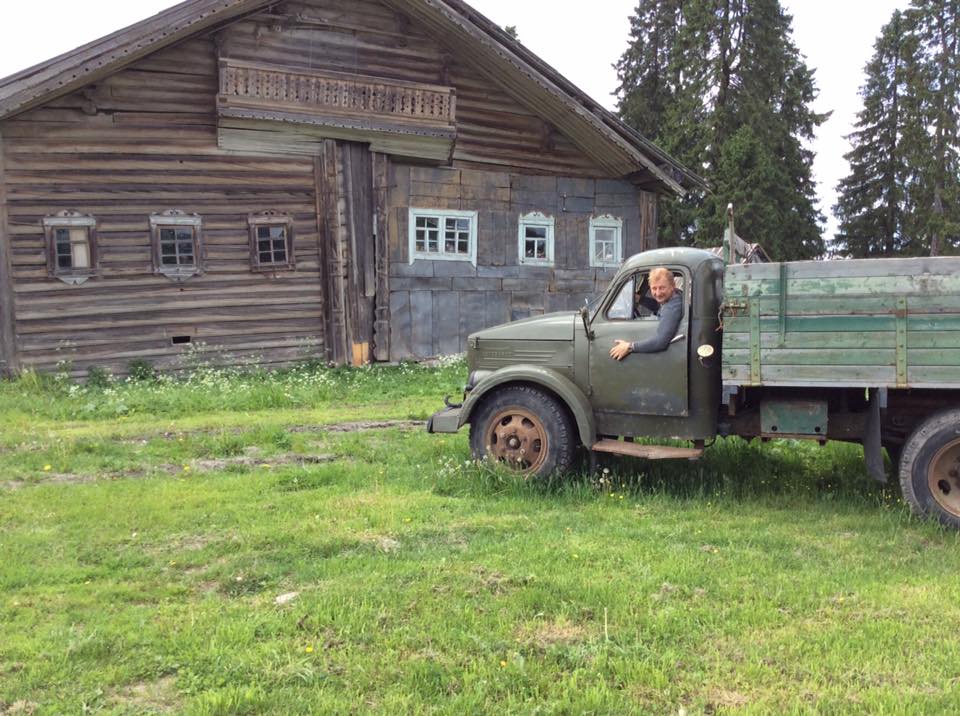
 Cap-travel.ru
Cap-travel.ru